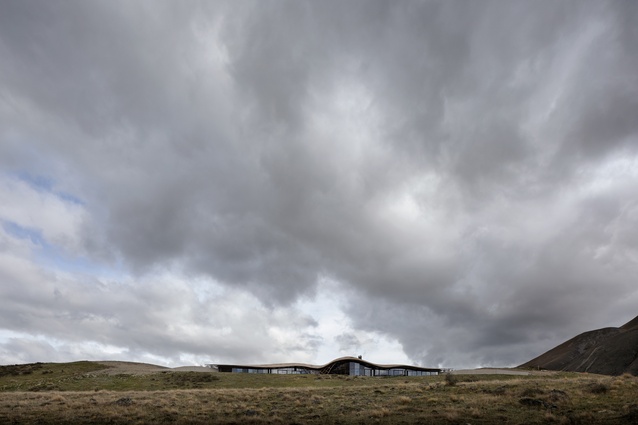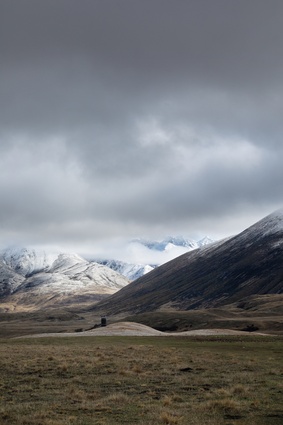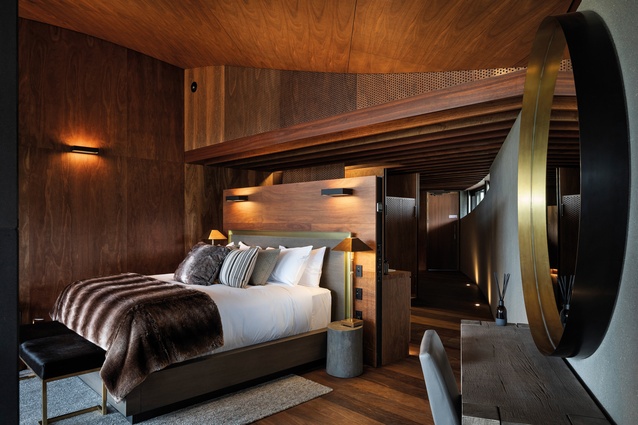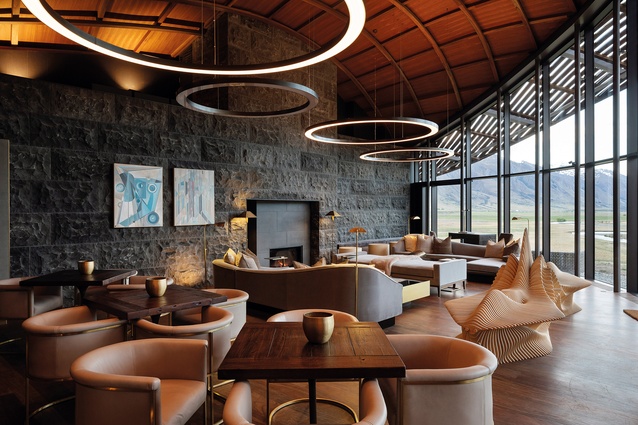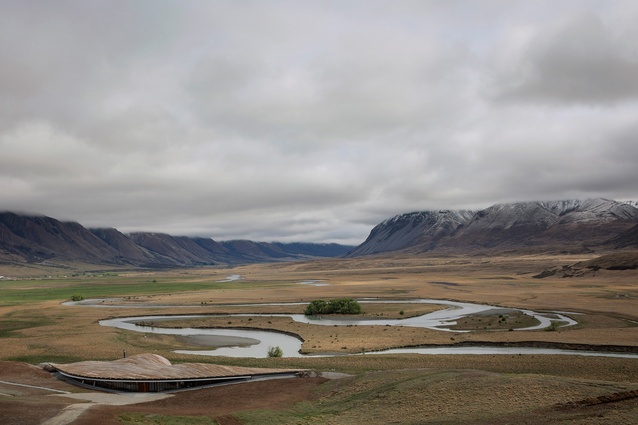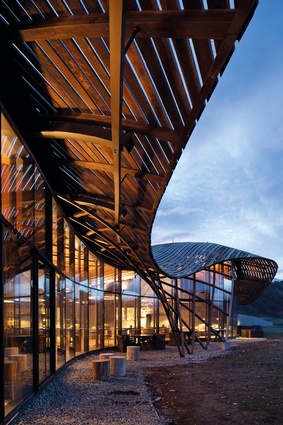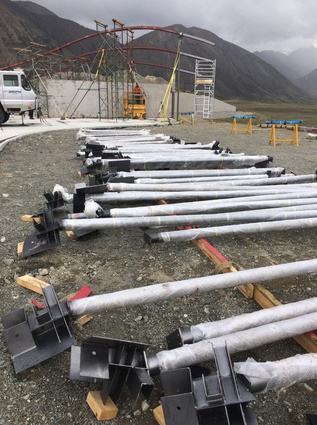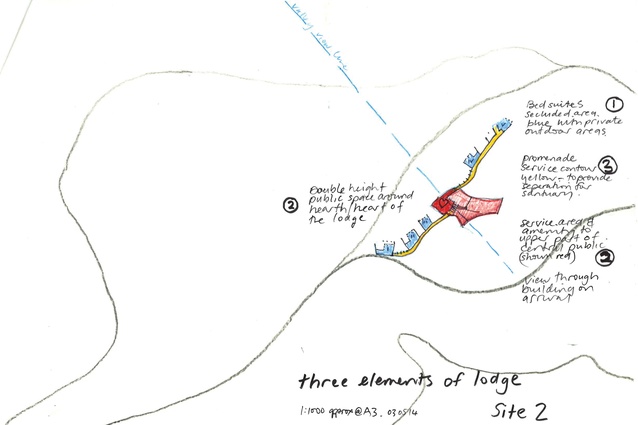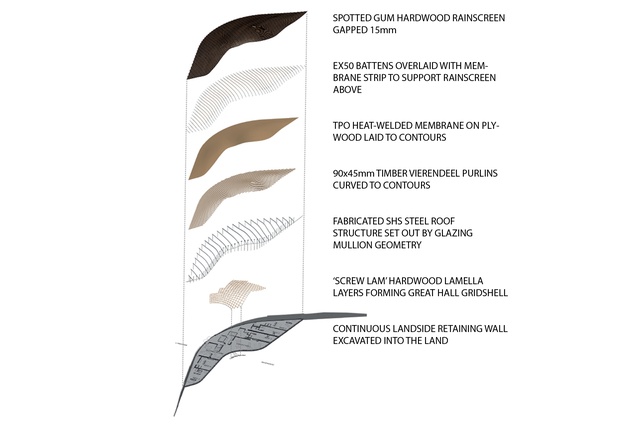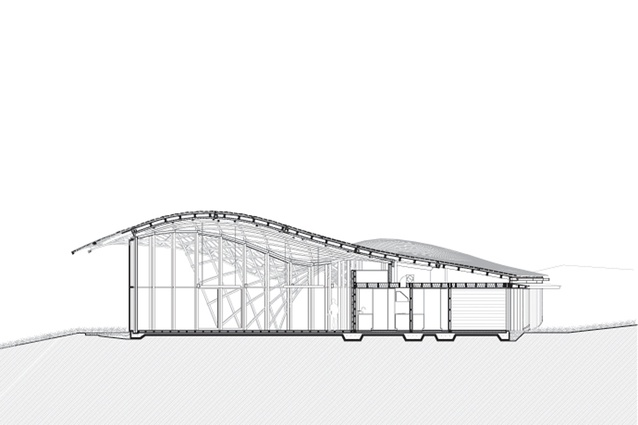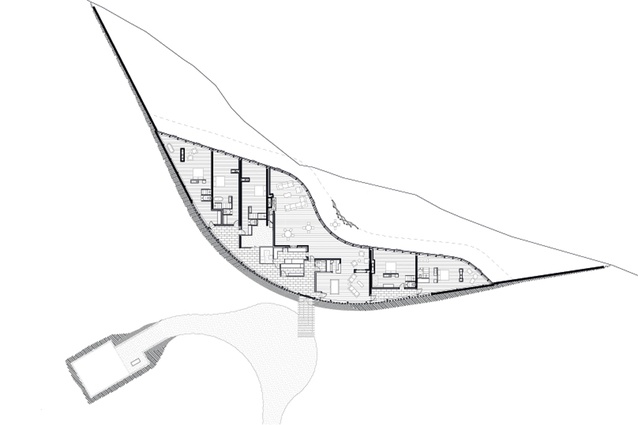Wilderness for the wealthy: The Lindis
Chris Barton finds the undulating roof lines of this lodge by Architecture Workshop at one with the topography that inspired them.
It seems a contradiction in terms – luxury wilderness lodge. That’s what ‘The Lindis’ in the South Island’s Ahuriri Valley is selling – a place to “unwind and relax while taking in the surrounding idyllic setting”. A place “to slow down and enjoy the stillness of nature in modern, sophisticated luxury”.
The “surrounding” is some 2737 hectares of the Ben Avon Station, in prime Mackenzie Country adjoining conservation parks on three sides. The “idyllic” is a glacial valley landscape alongside the snaky Ahuriri River amongst golden tussock grasslands flanked by the snow-streaked mountains of the Huxley and Barrier Ranges. On the way in, you may spot a couple of farm buildings but not much else except for a vast openness. If it feels familiar, that might be because Peter Jackson appropriated parts of it as scenic backdrops in his Lord of the Rings trilogy.
The “modern, sophisticated luxury” has been likened to a deluxe upgrade of Frodo’s hobbit house but, while it might be blended in, The Lindis is really not a burrow at all. Its architecture is inspired by the grandeur of the landscape and the weaving, folded moraine topography of the Ahuriri Valley – a remnant carved out by a glacial retreat 10,000 years ago.
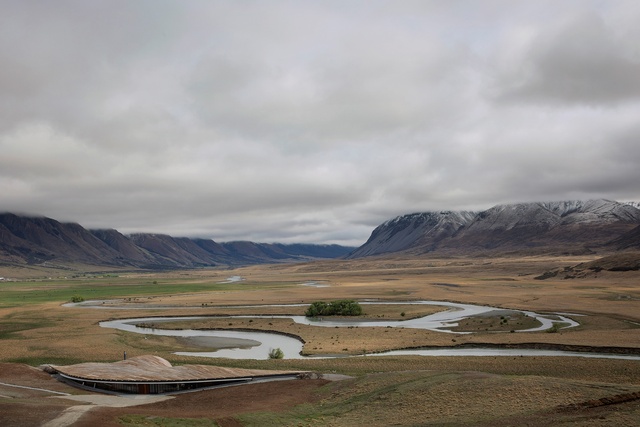
Architecture Workshop’s Christopher Kelly has taken an if-you-can’t-beat-it-join-it approach to the imposing majesty of the setting, making the building part of the topography, fusing the built form with its environment. In the process, he’s created a building that’s both camouflaged and assertive, assimilated like a new fold in the moraine into its giant natural surroundings, yet, undoubtedly architecture, in contrast small but defiantly standing staunch to be admired.
The result is a building all about a roof that wants to be ground – three parametric landscape contours. The largest and curviest is a gridshell in the middle, joining two flatter hill slopes either side, all covered in a hardwood timber rainscreen (to deal with snow loads) of long, rough-sawn 150x25mm boards. Yes, a wooden roof with the waterproofing Thermoplastic Polyolefin (TPO) membrane beneath. The lodge, stretched out and tapering at the ends, has just two elevations: the landside smile shape excavated and hunkered down into the ground and the wavy riverside lifted up and opened with floor-to-ceiling glazing to the view.
A gallery hallway following the low, sunken, curving landside façade provides circulation to the lodge’s five bed suites and a view line at tussock level out to the rolling glacial moraine. The view also lets you see the wind gusts on the tussock, similar to the way they ripple the surface of the ocean.
The wind here – blowing hard and often – is an unexpected regular feature. In the face of it, I wonder how often the outdoor furniture scattered along the riverside façade is used. A lot, the lodge’s general manager William Hudson assures me. “Guests sit there and are battered by the breeze and love it.” Such are the habits of the rich and famous, who pay between $2500 and $3000 a night – the price for splendid isolation, for peace and, on still days or if you stay inside, tranquillity.
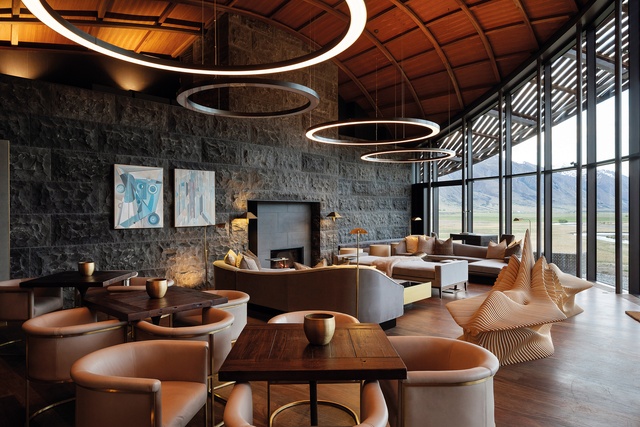
The low and darkly reflective ceiling on the landside prepares visitors for a progression from the entrance to the soaring gridshell space of the Great Hall and the vast wilderness view to the river and the valley. Here, a wide eave softens the light as does the lattice, aka ‘the funnel’, formed in the middle from several rib lines of the roof, extended to the ground as a splayed column supporting the gridshell and providing 40 per cent of the bracing for the roof. The massive lounge feels a little overstuffed with eclectic furniture but the split bluestone gas fireplace wall anchors the space and provides a counterpoint for the enfolding spotted gum gridshell dome.
The gridshell was a specific request from the lodge’s owner whom no one seems to want to name. A quick Google search reveals it’s British businessman Richard Magides, co-founder of the Singapore-based hedge fund Artradis Fund Management, who reportedly gained Overseas Investment Office (OIO) approval to snap up Ben Avon Station for $6.5 million in 2013. Magides also owns the Paroa Bay Winery in Russell and land in Queenstown, and, in 2014, he won OIO approval to purchase the 2944-hectare Mount Isthmus Station on the western shores of Lake Hawea for a reported $7.0 million.
The precedent Magides was keen on was the ‘three-domed’ sinusoidal-shaped gridshell of the Savill Garden in Windsor Great Park. The challenge for Kelly was to create something similar but at a more domestic scale. Kelly, working with Dunning Thornton Consultants engineer Alistair Cattanach, has something of a track record in gridshell design, most recently in the Waitomo Glowworm Caves Visitor Centre, but also going back to his time with Renzo Piano Building Workshop and, in particular, the firm’s work on Osaka’s curvaceous Kansai International Airport Terminal.
As Cattanach points out, at Waitomo, it was the structure and the geometry that drove the architecture. At The Lindis, it was the landscape curves rather than structural curves – in other words, making forms more or less because you could: contourtecture rather than blobitecture. And because gridshells gain strength from curvature, only the central part could be pure gridshell – that is, two woven, criss-crossed layers making up a double-curvature skin.
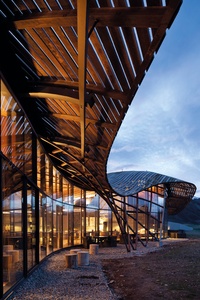
For the outer, flatter roof contours, undulating spaghetti-like steel rafters follow the shape of the roof span between 53 steel columns along the riverside and landside walls, each one a different shape and each connecting at a different column ‘flaghead’. All of this is possible only because of parametric modelling.
The weaving gridshell lines were achieved with the onsite bending by hand of each of the two ‘lamella’ layers, using three 90x25mm spotted gum boards (in 4m overlapping lengths) screwed together at 150mm centres – a process christened ‘screw lam’. Cattanach says something like 14,000 batten screws were used on the job and calculated that, while the spotted gum was hard and stiff, it was still bendable. He convinced initially sceptical builders by clamping a piece of timber in a jig and then bending it by hand – calculating the process would need “about 40 kilos of force”: something he could apply to it.
There’s plenty of other cleverness in this building too, including hydronic underfloor heating and a ground-source heat pump system, complete with a large ground source collector field buried 3m deep providing 16 degrees of free preheat on the hot water supply.
Amidst its natural splendour, the lodge also represents an uneasy privatisation of wilderness for the wealthy. This raises the vexed issue of tenure review. It began in 1992 when the Crown, which has owned and leased our high country since the 1850s, started offering an option to purchase the freehold rights to this majestic land: a carve-up of a public good to the benefit of the few. But there’s no doubt this topographical building achieves its design aim to heighten the visitor’s relationship with the vastness of their surroundings and that it does so with considerable skill and style.
This article first appeared in Architecture New Zealand magazine.


